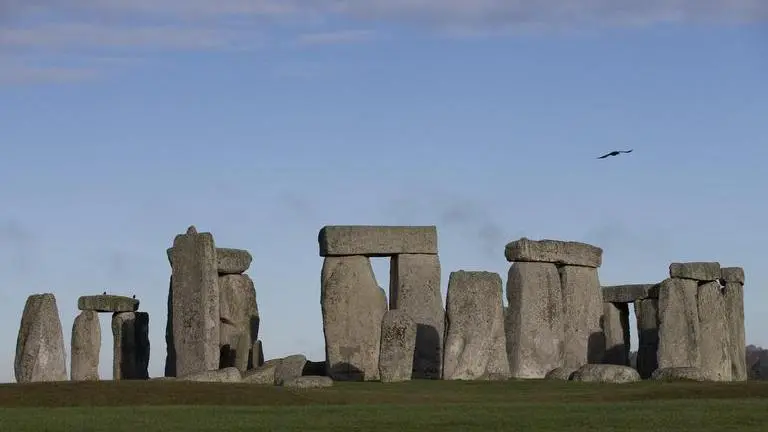Updated 12 February 2021 at 20:17 IST
England's Stonehenge may have been built in Wales first, Study suggests
British scientists have discovered dismantled bluestones laid down in a circular pattern in Wales, similar to that of now standing in Wiltshire, the Stonehenge.
- World News
- 2 min read

British scientists have discovered dismantled bluestones laid down in a circular pattern in Wales, similar to that of now standing in Wiltshire, the prehistoric Stonehenge monument. According to The Guardian, the stones discovered in Wales have been carbon-dated to 3,300 BC, nearly four centuries before Stonehenge was constructed, suggesting the old theory that the stones at Salisbury were dragged from Wales could be true. According to a study, the stones discovered in Wales were found aligned on the midsummer solstice sunrise, similar to the ones at Wiltshire.
The Stonehenge-like dismantled monument has been discovered at Waun Mawn, near to the site where more than 100 years ago geologist Herbert Thomas established that the dolerite bluestones at Stonehenge were extracted from the Preseli hills. According to the study, the remaining four stones found at the site are similar to the 43 bluestones at the Stonehenge in Salisbury plain.
Advertisement
Researchers had earlier established that the stones at the Preseli hills, from where the Stonehenge bluestones were extracted, were 200-300 years old from the Salisbury site. The gap left researchers thinking exactly what happened between the time the stones were extracted and until they were resurrected in Wiltshire. One of the theories put up by researchers was that other circular monuments may have been build during the period. Researchers started looking for similar circular stone monuments across the United Kingdom until they stumbled upon the dismantled Wales site, suggesting their theory could be right.
Advertisement
2020 discovery showed people resided near Stonehenge
Earlier last year, archaeologists discovered wide circles of deep shafts surrounding an ancient settlement near Stonehenge. The ancient shafts, 10 meters (33 feet) wide, and 5 meters deep the site demonstrated that the Neolithic communities resided in the area that had a stringent belief system which the researchers discovered using remote sensing technology and sampling. Stonehenge was built some 5,000 years ago by the Neolithic community of England. The purpose and motive behind the construction of the monument remain unclear to date.
(Image Credit: AP)
Published By : Vishal Tiwari
Published On: 12 February 2021 at 20:16 IST
